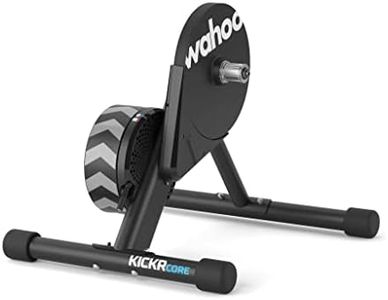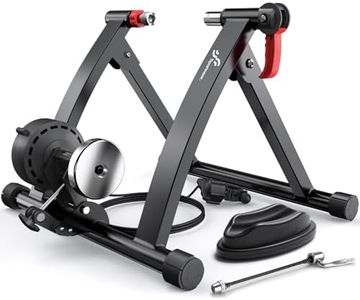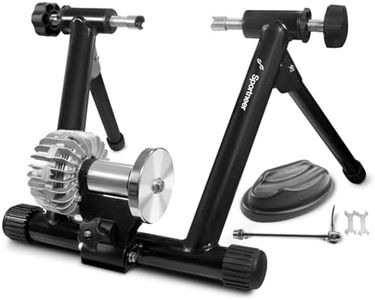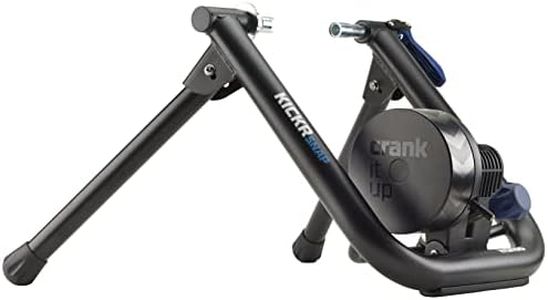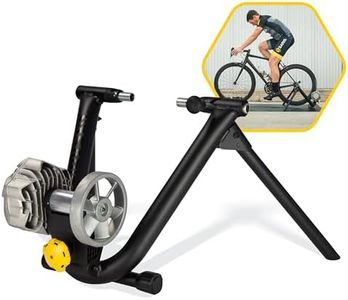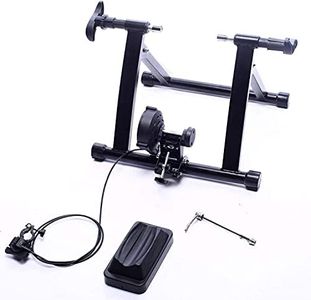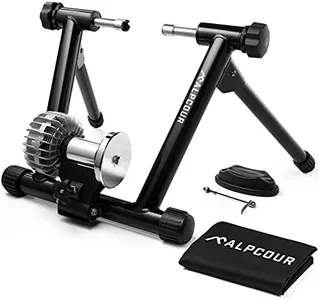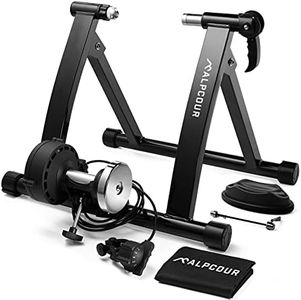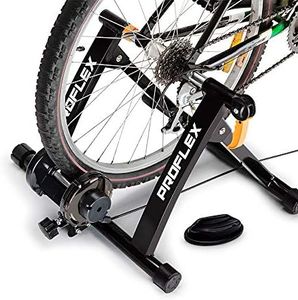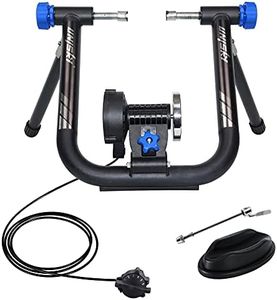We Use CookiesWe use cookies to enhance the security, performance,
functionality and for analytical and promotional activities. By continuing to browse this site you
are agreeing to our privacy policy
10 Best Mountain Bike Trainer
From leading brands and best sellers available on the web.Buying Guide for the Best Mountain Bike Trainer
Choosing a mountain-bike trainer is about finding a unit that matches your training needs, available space, and comfort preferences. A good trainer lets you bring your outdoor cycling experience inside so you can maintain your fitness or train for competitions regardless of the weather. The right trainer should feel stable, offer resistance suitable for your goals, and be compatible with your bike. Think about how often you’ll use it, how realistic you want the ride to feel, and what features will keep you motivated to ride indoors.Type of TrainerThe type of trainer refers to how the trainer generates resistance and how the bike mounts onto it. The most common types are direct-drive trainers, wheel-on trainers, and rollers. Direct-drive trainers replace your rear wheel and provide a realistic road feel and accurate resistance; they are typically stable and quiet, making them good for serious indoor cyclists. Wheel-on trainers are easier to set up—you keep your rear wheel on and clamp the bike onto the trainer—which is convenient for beginners or casual users, though they can be a bit noisier and less precise. Rollers require you to balance your bike as you pedal, simulating real riding skills but with a steeper learning curve. Your choice depends on how realistic you want the ride to be, your comfort with technology, and whether you prioritize convenience or performance.
Resistance MechanismThe resistance mechanism is how the trainer mimics the effort required to ride outdoors. Main types include magnetic, fluid, and electronic (sometimes called 'smart'). Magnetic trainers use magnets to create resistance and allow basic adjustments; these are simple, reliable, and often portable. Fluid trainers use a spinning impeller in a fluid chamber for smoother, more progressive resistance like true cycling feel, but can heat up over longer rides. Electronic trainers can automatically adjust resistance based on virtual routes or training apps, great for interactive workouts and tracking progress. Consider what kind of workouts you want to do—basic spinning, interval sessions, or interactive programs—and choose the resistance system that matches your style.
Bike CompatibilityBike compatibility means whether your mountain bike will fit comfortably and securely onto the trainer. Factors include wheel size, axle type (quick release vs. thru-axle), and frame shape. Most trainers support standard wheel sizes, but if your mountain bike has a unique axle type or extra-large tires, you may need adapters or specific models. Double-check the trainer’s specifications with your bike’s measurements to ensure a safe and stable fit. This is important for both performance and protecting your bike from unnecessary wear.
Noise LevelNoise level determines how much sound the trainer produces during use, which can be important if you live with others or in an apartment. Trainers with direct-drive and fluid resistance are typically the quietest, while basic wheel-on magnetic trainers tend to be the loudest due to friction. If you’ll be training early or late, or want to watch TV or listen to music, prioritize a quieter trainer. Think about your environment and if noise could be disruptive to those around you.
Stability and Build QualityStability and build quality speak to how solid and secure the trainer feels under you, especially during hard efforts. Heavier or wider trainers tend to wobble less and handle jumps or sprints better, which is especially useful for mountain bikers practicing intense riding styles. Look for models with sturdy frames and non-slip feet if you plan to ride vigorously. If you use the trainer mainly for easy spins, a lighter and more portable unit may be sufficient.
Adjustability and PortabilityAdjustability refers to how easily the trainer can fit various bike sizes, wheel dimensions, and resistance levels. Portability is about how simple it is to move or store the trainer, which matters if space is limited or you plan to take it on trips. Trainers that fold up or pack away compactly are easier to manage in tight spaces, while adjustable trainers are better for households with several bikes or different users. Consider how often you’ll need to set up or move the trainer and whether adjustability or portability will make your experience more enjoyable.
Integration with Training AppsSome trainers offer connectivity with apps or devices that track your workouts, control resistance automatically, or simulate real-world rides using virtual platforms. This can make indoor cycling more engaging and help you monitor progress. 'Smart' trainers typically support connections via Bluetooth or ANT+ to tablets, computers, or smartphones. If structured workouts and motivation are important to you, look for trainers with reliable app integration. If you prefer a more basic experience, this feature may be less necessary.
